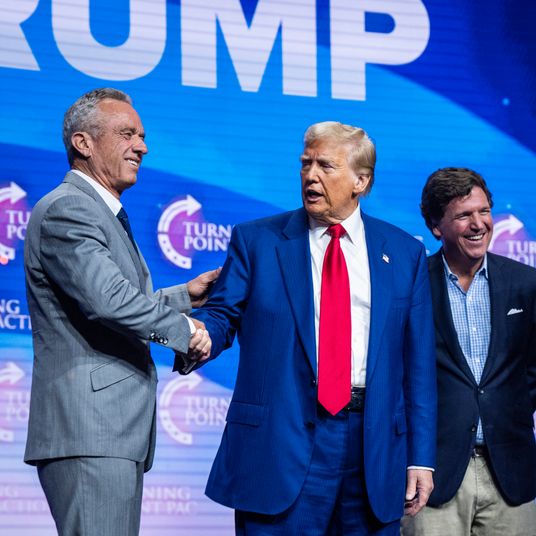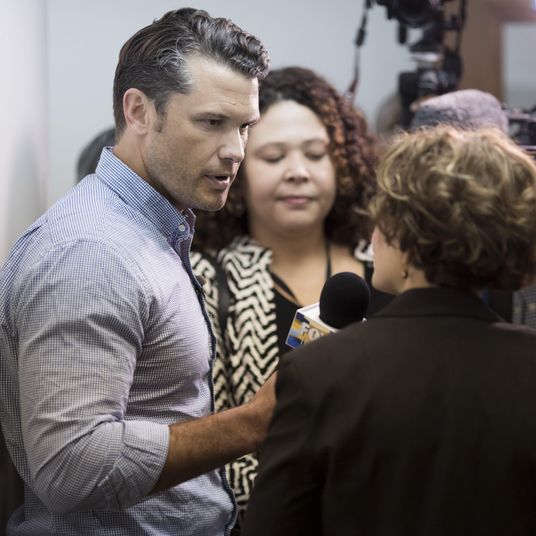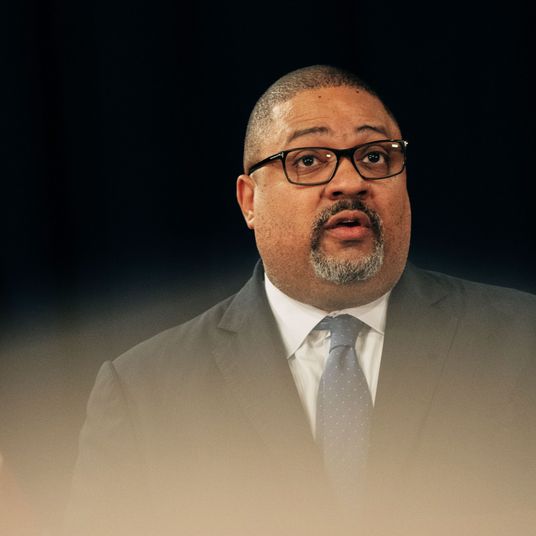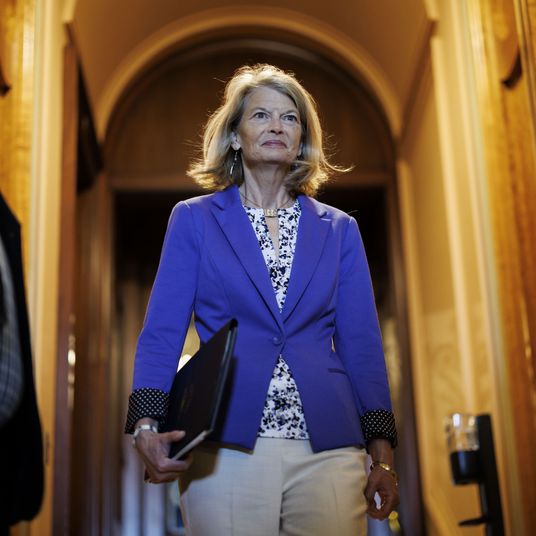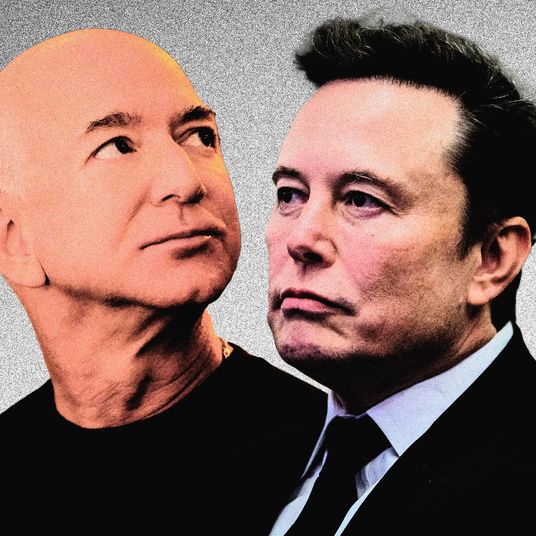
The week after his historic win, the Donald Trump presidency began taking shape with a series of Cabinet and other high-level announcements, and the media, which has chronicled his every troll, tweet, and leak — not to mention substantive policy decisions — for a decade, looked on with trepidation. “Four years ago, everyone was saying, ‘I’m never going to do this again,’” says one veteran political reporter. “Everyone got fat and wrinkles and gray hair and no one saw their kids. Everyone was like, never again, particularly after January 6.”
Yesterday morning, Fox Business reporter Eleanor Terrett posted what looked like an official announcement from the Trump-Vance transition team announcing Tucker Carlson as White House press secretary. She promptly deleted it; turns out it was fake news. But it wasn’t so hard to believe. Trump a day earlier had picked Pete Hegseth, the square-jawed Fox News host and self-certified anti-woke crusader, to run the Pentagon.
In fact, Trump has yet to name a press secretary, the most public-facing role in the shop. The press secretary typically holds a daily briefing with the White House press corps, though that practice became not so daily in Trump’s first term, when his press secretaries went weeks and then months without taking questions from reporters. (It came back on a regular basis under President Biden, even if the big guy himself was a bit averse to meeting the press.) Trump in his first administration went through four press secretaries: Sean Spicer (now a podcaster), Sarah Huckabee Sanders (now the governor of Arkansas), Stephanie Grisham (now a frequent anti-Trump voice on TV panels and beyond — she spoke at the DNC), and Kayleigh McEnany (now a Fox News co-host).
“In the previous four years, he often benefited from press secretaries who had a good working relationship with the press and knew how to manage a story,” one reporter on the Trump beat said, noting his coverage “was probably slightly better” when Sanders was behind the podium, even though she acknowledged misleading the press and broke and rebroke the record for not briefing them throughout her nearly two years in the job (until Grisham, who in her six months in the job held zero briefings). But behind the scenes, the reporter noted, Sanders could be helpful.
Several reporters think Karoline Leavitt, who served as the campaign’s national press secretary and now serves as transition spokeswoman, is the current front-runner. The 27-year-old, who served as an assistant press secretary and presidential writer during the first Trump administration, was described as sharp, aggressive, and — as is important to Trump — telegenic, sparring with CNN and, more recently, previewing Trump’s day one on Fox News. Leavitt has “gone on the ‘adversarial’ networks and done pretty well, and he loves that,” said one Trump reporter. “One thing he and his team are doing is watching all of these cable news appearances.” The downside, reporters noted, is that she hasn’t actually managed a ton of people before.
Other names that reporters raise for the press secretary or communications director gigs include the often-withering campaign spokesman Steven Cheung; campaign advisers Danielle Alvarez and Brian Hughes (both Florida natives, both brought in by recently appointed chief of staff Susie Wiles); Tim Murtaugh, a former 2020 Trump campaign comms director who led Trump 2024’s comms in the final month before the election; and, perhaps, Scott Jennings, the Establishment-handsome political strategist who has become CNN’s go-to Republican pundit. Jennings does have a background working for pre-MAGA machers like Mitch McConnell, which could ding his loyalty credentials, but I hear that members of Trumpworld have been impressed by his performances on CNN. And Trump does love TV.
Even as Trump ranted against the “enemy” media, often threatening them, from the rally stage, off-stage, his team was, I’m told, helpful and responsive. Which gives the reporters some hope that they will be able to do their jobs. In fact, many journalists found the Trump team easier to work with — often much less nitpicky — than the Biden campaign. Depending, perhaps, whom you work for; just last week, the Trump campaign finished the election by barring multiple reporters from its watch party. “They have different relationships with different news outlets. They’ve blackballed people and can be vindictive, but overall I’ve found them to be professional,” said one political reporter from a mainstream news organization. “Part of the reason the campaign was effective was that it was run like a family business — very small, all close to Susie. But the stakes will be a lot higher once they get to the government,” the reporter said, “and that’s when they could lose their shit.” Trump staffer Alex Pfeiffer previewed what that might look like on X last week, writing, in response to a since-deleted Politico tweet, that he was “looking forward” to Breitbart Washington bureau chief Matthew Boyle “in the front row of the WH briefing room next year” and that Politico’s “days are numbered.”
The 2024 Trump campaign’s media strategy largely circumvented mainstream publications, opting instead for interviews with personalities like Joe Rogan and Adin Ross. Whether that strategy carries over, too, is a question. “Are we going to see Theo Von interviewing Trump in the Oval Office instead of CNN?” one reporter asked. Perhaps it’ll just be more of a balance between mainstream and independent outlets in this White House. Despite railing against the “fake news” media onstage (and even musing that he wouldn’t mind if journalists got shot), Trump still cares about traditional press coverage, and he also likes having reporters as foils. “I understand that his campaign has very effectively used podcasts and non-mainstream media to sell his message,” the New York Times’ Maggie Haberman recently told CNN. But Trump is still “an almost 80-year-old man who does care about legacy media and headlines he sees and cable coverage he sees. We’ll see how he reacts to it as he goes in because that’s what happened last time.”
There’s no telling how the White House could upend the traditions of the briefing room, or what authority the White House Correspondents’ Association — an independent organization representing the various journalists (print, digital, television, radio, etc.) who cover the White House — would have to stop it. The WHCA doesn’t have control over credentials, though it does — at least for now — have authority over seating in the briefing room. “It has authority through a social contract, but I don’t know what the WHCA would do if Trump said we’re changing the seats in the briefing room,” a Trump reporter noted. “I think it’d be a fight, but I don’t know if it’s one the WHCA would win.”
Whoever sits in the briefing room in the end, or where, there has been endless hand-wringing inside news organizations about how to approach covering another Trump White House, whether they need to do things differently this time around and, if so, how. Reporters and editors I’ve spoken to have stressed the need to go deeper, prioritizing investigations over quick hits and not dropping everything to cover the latest proclamation or announcement with likely little lasting news value. “Trying to sort out which are things that are legitimate and going to happen, and which are just bluster,” as one political reporter described the takeaway from a recent meeting about coverage. These conversations will remain vague, though, until publications figure out who the actual reporters and editors on the team are. Politico’s White House team is in flux, as is The Wall Street Journal’s and Washington Post, and it might take until January to see what this reassessment — if it even is one — looks like in practice. News organizations have certainly gotten better about what speeches they carry and what developments warrant a write-up. But it’s also the president of the United States, which has inherent news value. Even if it often feels like so much Sturm und Drang that it doesn’t mean anything for long.
“Covering a Trump administration just requires a pretty robust strong team that is going to be available all the time,” a political reporter noted. The problem is this: “Who has the money to hire? Basically everyone is laying folks off. There’s just not a lot of resources out there,” said another. “A handful of places will be on the hunt, and everyone else will be trying to keep their current talent from bailing.”
The Washington Post seems to fall into both categories. Top Trump reporters Josh Dawsey and Ashley Parker have told people they’re unsure of their next moves and have yet to make a decision. Meanwhile, the Post is down journalists who are not traditional Trump reporters but experts on beats that will have an outsize importance in Trump’s White House: intelligence and national security reporter Shane Harris joined The Atlantic in August, while Department of Justice reporter Devlin Barrett joined the Times a month after. The paper currently has open job listings for both roles.
The Times is, as with most things these days, particularly well positioned for another Trump term, with its powerhouse duo, Haberman and Jonathan Swan, signed on to cover him again and plenty of resources to go around. The broader White House team is still coming into view, and there may be openings: Veteran journalist Peter Baker declined to say whether or not he’d cover this White House — “everybody is in discussions right now, talking about what makes the most sense, and I’m among them,” he told me — and White House correspondent Michael Shear is sitting this one out, as he’s taken a job at the Times’ London bureau. The paper’s Washington bureau will also have new leadership by the time Trump is in office, as bureau chief Elisabeth Bumiller told staff on a call last week that she’d be stepping down from the job in January. Dick Stevenson, her No. 2, is high on the list to replace her.
While there’s a ton of people — many new to the beat this cycle and not yet entirely beaten down by it — who have covered the election, those already with experience will be valuable. Which is why some journalists speculate that someone like Jennifer Jacobs — the Bloomberg reporter who got lots of access covering the first Trump administration but departed after an embargo-breaking scoop this summer — might get scooped up in the hiring frenzy. “Perfect time for people to rehabilitate themselves,” one mused.
“There’s actually only a small group of people who covered him through 2015 to now and are sourced in that world,” one veteran Trump reporter noted. “For the actual sourced reporters who have an institutional memory — it’s not really more than a dozen people.” But not all of them want to go back for another tour. Many of those reporters are exhausted and have already written their books.
The irony is, despite all of the anticipated cutbacks and financial anxiety, it’s hard for news outlets to resist not throwing what resources they do have into chasing the story. Just look at how many reporters are down on Palm Beach, waiting for something to happen.
More From This Series
- Jeff Bezos Cracks Down on the Washington Post
- Trump Campaign Finishes the Election by Taking Revenge on the Media
- After the Trump Bump, There’s Now the Bezos Ditch














